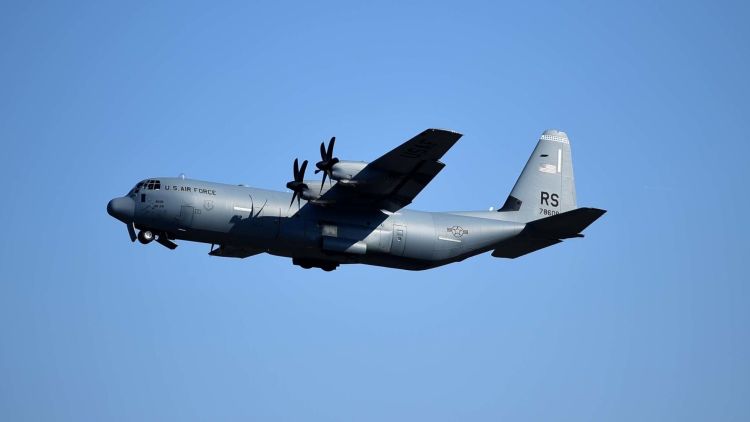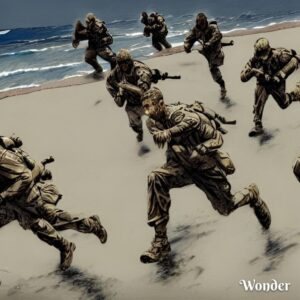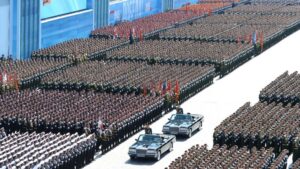On July 22, at the Farnborough International Airshow, defense giant Lockheed Martin announced that the global C-130J Super Hercules fleet had surpassed three million flight hours since its first flight in 1996.
This milestone showcases the aircraft’s versatility and reliability as a global workhorse, serving 21 nations with various missions ranging from combat deployments and aerial refueling to search and rescue operations, humanitarian relief, and more.
“From the highest landing strip in the world to the snow-packed runways of Antarctica and all the many mission locations in between, these 3 million hours represent the proven power and wide-reaching presence of the C-130J’s global fleet,” stated Rod McLean, Vice President and General Manager of Lockheed Martin’s Air Mobility & Maritime Missions line.
“In celebrating this achievement, we also honor the many crew members, maintainers and airlift partners who truly keep the global Super Hercules fleet ready for any and every mission requirement.”
Super Hercules and Its Versatile Fleet Configurations
The C-130J Super Hercules wasn’t just a simple evolution of the C-130 family but rather a significant upgrade.
The need for a more robust and versatile transport aircraft prompted its development in the early 1990s. It boasted significant improvements, replacing the older turboprop engines with four Rolls-Royce AE2100D3s (each producing 4,637 shp or 3,458 kW) and offering increased power and fuel efficiency.
The avionics suite received a complete overhaul, featuring digital displays and advanced navigation systems, and its airframe was strengthened to accommodate the increased weight and performance.
C-130J global fleet surpasses 3 million flight hours. (Lockheed Martin)
After years of development, the first C-130J flew on April 5, 1996, ushering in a new era for military transport and the beginning of hour counting.
With a maximum speed exceeding 400 mph (644 km/h), a range of over 2,100 miles (3,380 km), and the ability to carry up to 42,000 pounds (19,051 kg) of cargo, the C-130J Super Hercules quickly established itself as a global workhorse.
It participated in every conceivable mission, from medevac and humanitarian relief to specialized combat and intelligence operations.
The versatility of the Super Hercules is reflected in its various configurations, including the standard C-130J, the extended-range C-130J-30, and other specialized variants like the KC-130J tanker and the AC-130J gunship.
Lockheed Martin logged hours for the following variants, participating in test, training, and operational missions:
C-130J and C-130J-30 (tactical airlift),
KC-130J (tanker),
WC-130J (weather reconnaissance),
EC-130J (information operations),
MC-130J (Special Operations),
HC-130J (search and rescue, US Air Force and US Coast Guard variants),
AC-130J (gunship), and
LM-100J (commercial freighter).
Key Contributions and Future Outlook
The C-130J’s operational record also highlights significant contributions from the Lockheed Martin Flight Operations team and the US Air Force Defense Contract Management Agency, both integral to the aircraft’s testing and operational deployment.
Explore the reasons behind its enduring popularity in the newest episode of Lockheed Martin’s “Into the Cockpit” series below or on YouTube. Get exclusive behind-the-scenes access to this legendary aircraft!
With this milestone, Lockheed Martin continues to innovate and adapt the C-130J to meet future challenges.
The Super Hercules remains a critical asset in the tactical airlift arena, offering unmatched operational readiness, increased reliability, and interoperability with NATO (North Atlantic Treaty Organization) and global air forces.
As the Super Hercules fleet looks to the future, its legacy of reliability, versatility, and global reach continues to play a pivotal role in shaping tactical airlift operations worldwide.
—
Disclaimer: SOFREP utilizes AI for image generation and article research. Occasionally, it’s like handing a chimpanzee the keys to your liquor cabinet. It’s not always perfect and if a mistake is made, we own up to it full stop. In a world where information comes at us in tidal waves, it is an important tool that helps us sift through the brass for live rounds.



